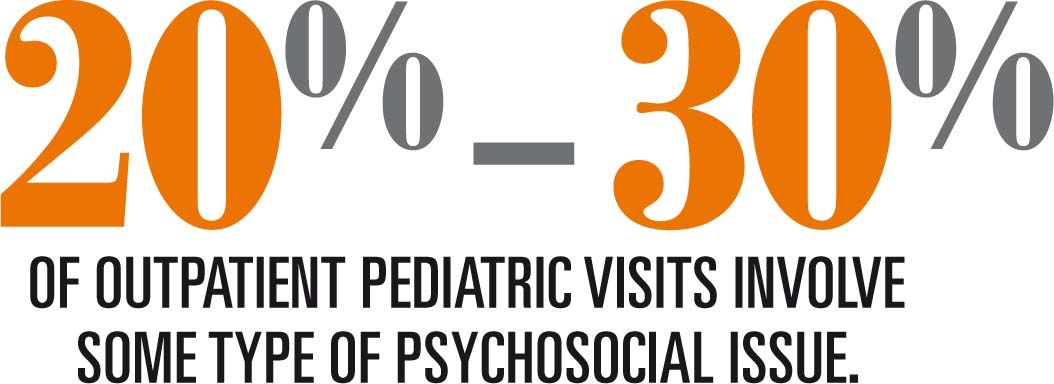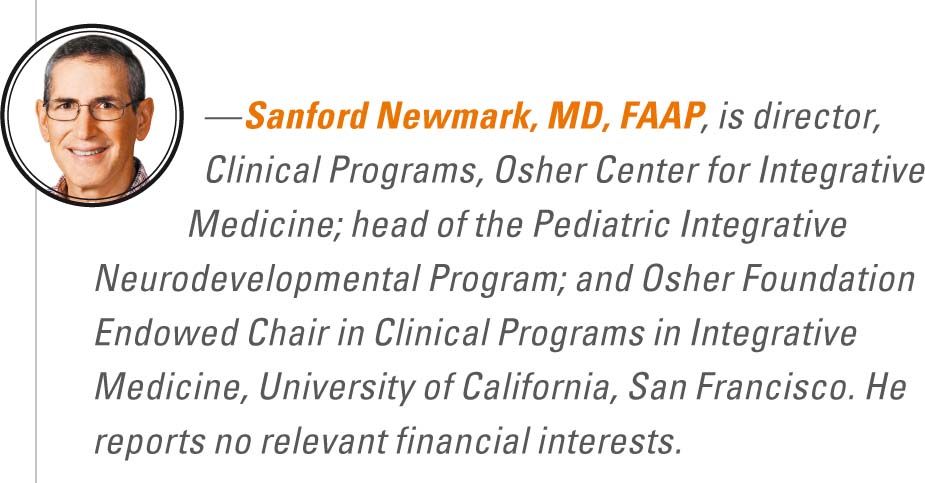Primary care psychopharmacology
Evidence-based guidance is available to help primary care practitioners provide psychopharmacologic treatment for behavioral disorders.
Evidence-based guidance is available to help primary care practitioners provide psychopharmacologic treatment for behavioral disorders, said Rebecca Baum, MD, FAAP. This information formed the basis of her talk "Primary care psychopharmacology for common behavioral disorders" at the 2016 American Academy of Pediatrics’ National Conference and Exhibition.
Baum has first-hand knowledge of the challenges that primary care practitioners may face when trying to address mental-health concerns. "Before my fellowship training in Developmental-Behavioral Pediatrics, I practiced pediatrics in a small town for several years." She said that primary care practitioners often feel unprepared for the high frequency of psychosocial concerns that they face in practice. Experts estimate that 20% to 30% of outpatient pediatric visits involve some type of psychosocial issue.
More: Be vigilant in screening for psychological risk factors
Depending on the community, practitioners may also experience a limited supply of local mental health providers. Residency programs are required to offer 1 month of developmental-behavioral pediatric care over the course of training, which may not be enough time to gain a comfort level or expertise. So, community practitioners may find themselves doing things that they were not necessarily trained to do.

Baum added, "We know that primary care practitioners are working very hard to meet their patients' needs," but in some cases, lack of training and expertise may translate into underprescribing or overprescribing medications with which they are not comfortable.

The good news for practitioners is that evidence-based guidance does exist to help them manage common mental health problems that they face in practice, namely, attention-deficit/hyperactivity disorder (ADHD), anxiety, and depression.1-4
The American Academy of Pediatrics (AAP) recently published the Pediatric Psychopharmacology for Primary Care textbook.5 Additionally, the AAP has created practitioner toolkits, available for purchase, for mental health concerns and ADHD.
Practitioners can also find resources for families from the AAP at www.healthychildren.org and from the American Academy of Child and Adolescent Psychiatry at bit.ly/AACAP-Facts-for-Families.

REFERENCES
1. Subcommittee on Attention-Deficit/Hyperactivity Disorder; Steering Committee on Quality Improvement and Management; Wolraich M, Brown L, Brown RT, et al. ADHD: clinical practice guideline for the diagnosis, evaluation, and treatment of attention-deficit/hyperactivity disorder in children and adolescents. Pediatrics. 2011;128(5):1007-1022.
2. Committee on Psychosocial Aspects of Child and Family Health and Task Force on Mental Health. The future of pediatrics: mental health competencies for pediatric primary care. Pediatrics. 2009;124(1):410-421.
3. Zuckerbrot RA, Cheung AH, Jensen PS, Stein RE, Laraque D; GLAD-PC Steering Group. Guidelines for adolescent depression in primary care (GLAD-PC): I. Identification, assessment, and initial management. Pediatrics. 2007;120(5):e1299-e1312.
4. Cheung AH, Zuckerbrot RA, Jensen PS, Ghalib K, Laraque D, Stein RE; GLAD-PC Steering Group. Guidelines for adolescent depression in primary care (GLAD-PC): II. Treatment and ongoing management. Pediatrics. 2007;120(5):e1313-e1326. Erratum in: Pediatrics. 2008;121(1):227.
5. Riddle MA, ed. Pediatric Psychopharmacology for Primary Care. Elk Grove Village, IL: American Academy of Pediatrics; 2016.
NEXT: Commentary
COMMENTARY
Having evidence-based guidelines (EBGs) for addressing common mental health issues in primary care pediatrics is helpful, but Dr. Baum's presentation only scratches the surface of what is required for patients with these problems.
Psychosocial issues are a significant part of primary-care pediatrics, and pediatricians are often poorly trained to take care of these patients. As Dr. Baum points out, there are inadequate numbers of developmental or behavioral pediatricians to whom to refer patients when necessary. This may indeed translate to underprescribing or overprescribing medications, but that is only part of the problem.
The fact that there are EBGs for addressing common mental health issues in pediatrics does not solve the pediatrician's problem. In and of themselves, EBGs do not provide an adequate approach to learning to take care of such complex problems. One needs mentoring and experience. Moreover, the presentation does not address how the primary care doctor will find the time to do the type of evidence gathering suggested by the EBGs, and to secure appropriate reimbursement.
Next: Wet pants and constipation
Dr. Baum points out that psychosocial issues may be 20% of primary care practice, but doctors may get only 1 month of residency training in this area. Why not suggest that this be changed, so that training reflects what people will be doing, or suggest required postgraduate training (as in, demanding pain management training)?
The presentation also does not discuss the importance of a team approach-using mental health professionals and school contacts to help in evaluation and treatment. In my opinion, the presentation should discuss the dramatic rise in the diagnosis of ADHD and the clear evidence that it is being seriously overdiagnosed, at least in many areas. Finally, from an integrative healthcare perspective, I would also like to see mention of the role of nutrition, sleep, and exercise in combating ADHD and other common mental health issues. These issues require us to consider the whole child, not just what EBGs say.

Mr Jesitus is a medical writer based in Colorado. He has nothing to disclose in regard to affiliations with or financial interests in any organizations that may have an interest in any part of this article.